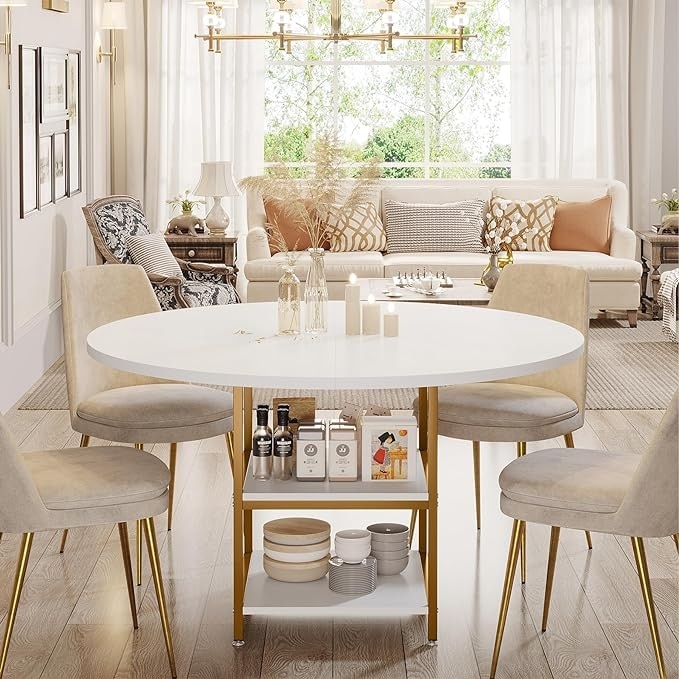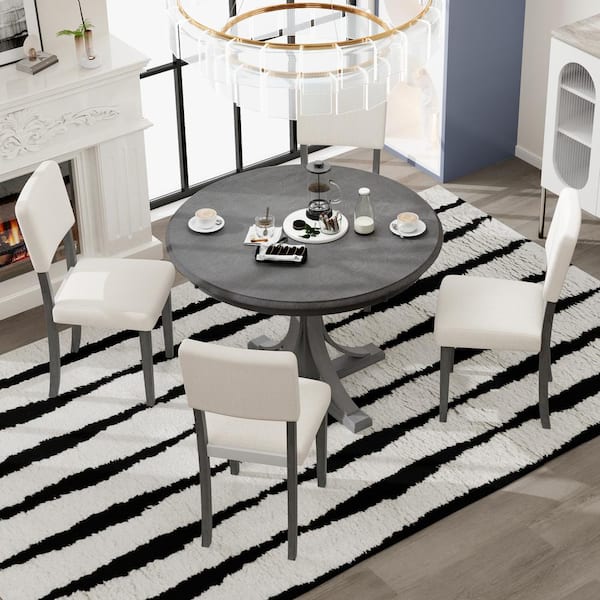How to Maintain and Care for Your Dining Room Table Legs
Wiki Article
From Typical to Modern: Find the Perfect Dining Room Table Legs for Your Design
While classic styles such as cabriole and transformed legs stimulate a sense of ageless refinement, contemporary styles like barrette and geometric alternatives present a chance for striking aesthetic passion. As you consider these components, the inquiry continues to be: exactly how can you flawlessly incorporate these diverse leg styles to create a harmonious eating experience?Recognizing Table Leg Styles
The selection of dining-room table leg designs can significantly influence both the visual appeals and performance of the area. Each leg style contributes unique functional functions and visual aspects, dealing with diverse layout choices and use demands. Comprehending these styles is essential for selecting the right dining table that straightens with your total interior decoration vision.For instance, conical legs use a clean, classic appearance that can improve a space's elegance, while stand bases supply stability and make best use of legroom, making them excellent for smaller sized spaces. Barrette legs, a trademark of mid-century modern layout, present an industrial panache, permitting an airy, open feeling. Trestle legs evoke rustic appeal, offering durable support and a feeling of timelessness.
Wood legs can bring heat and texture, whereas steel alternatives frequently share a sleek, contemporary ambiance. Inevitably, understanding table leg styles is crucial for creating a cohesive eating location that reflects personal style while making sure usefulness and comfort.
Conventional Table Leg Options
When choosing dining-room table legs, traditional choices commonly personify timeless beauty and workmanship. These layouts reflect a rich heritage and a commitment to quality, making them optimal for those that value timeless aesthetic appeals.Among one of the most legendary traditional leg styles is the cabriole leg, characterized by its graceful curved shape. This design often features ornamental carvings and is most typically discovered in Queen Anne and Chippendale furniture. One more preferred choice is the turned leg, which boasts a series of smooth, rounded shapes that provide a classic appearance while keeping security.
Moreover, the straight leg, while basic, uses a strong and unadorned structure that can blend seamlessly with a variety of tabletop designs. For those attracted to ornate outlining, claw-and-ball feet legs evoke a feeling of majesty and can work as a magnificent centerpiece in any type of dining room.
Finally, pedestal bases, although not strictly legs, give an alternate conventional option that permits for adequate legroom and can be wonderfully carved. Each of these typical leg styles contributes to the total atmosphere of a dining-room, marrying feature with aesthetic allure.

Modern Table Leg Layouts
Modern table leg designs supply a diverse variety of designs that emphasize tidy lines and innovative products. These styles often focus on functionality while functioning as striking prime focus within an eating space. Minimal looks are prevalent, with legs crafted from products such as steel, glass, and engineered timber, which add to a contemporary and airy feel.One prominent design is the barrette leg, characterized by its slim, conical structure that supplies stability without frustrating the table top (dining room table legs). This style is usually found in mid-century contemporary furnishings and can easily complement different eating table shapes. One more fad is using geometric shapes, where legs may tackle asymmetrical or angular types, including aesthetic interest and a touch of creativity

Mixing Designs for One-of-a-kind Rooms
Usually, home owners look for to produce special dining spaces that mirror their individual design by blending numerous style elements. This approach enables the incorporation of diverse visual appeals, causing a harmonious yet distinct setting. For circumstances, matching a rustic wooden table with streamlined, contemporary metal legs can develop an eye-catching comparison that raises the room's total charm.In addition, integrating vintage table legs with contemporary table tops can evoke a feeling of history while keeping a modern perceptiveness. Such combinations not just showcase specific taste yet also urge imagination, permitting property owners to curate a room that feels both individual and inviting.
Shade plays an essential duty in this blending procedure; selecting table legs that match or comparison with the existing color plan can enhance visual passion. Whitewashed legs can soften the boldness of a dark table surface area, developing a balanced visual.
Tips for Picking the Right Legs
Selecting the right table legs is necessary for achieving both performance and visual allure in your linked here dining area. Begin by taking into consideration the overall style of your space. Typical settings benefit from legs that feature complex carvings or transformed layouts, while contemporary areas might call for sleek, minimal designs.Next, evaluate the elevation and stability of the legs. dining room table legs. Basic table range between 28 to 30 inches in height, so make certain the legs complement this measurement for comfort. Furthermore, robust materials, such as hardwood or steel, can improve security and long life
Examine the leg shape also-- choices consist of directly, tapered, or stand styles. Straight legs use a timeless appearance, while conical legs can include a touch of style. Pedestal bases give ample legroom and are perfect for smaller spaces.
Conclusion
In summary, selecting the perfect dining room table legs requires careful consideration of both modern and typical designs. Typical alternatives such as cabriole and transformed legs use ageless sophistication, while contemporary designs like barrette and geometric forms supply a modern touch. By balancing leg style, elevation, and product with the general design, a cohesive and welcoming ambience can be accomplished. Eventually, the chosen table legs need to mirror the preferred aesthetic, boosting the eating experience within the area.The variety of eating room table leg styles can significantly Full Article influence both the visual appeals and functionality of the space. Eventually, understanding table leg designs is necessary for developing a natural dining area that reflects personal design while making certain usefulness and convenience.One of the most renowned standard leg designs is the cabriole leg, characterized by its elegant curved shape. Straight legs supply a traditional appearance, while tapered legs can add click this a touch of style.In summary, choosing the ideal dining area table legs requires cautious factor to consider of both conventional and contemporary designs.
Report this wiki page